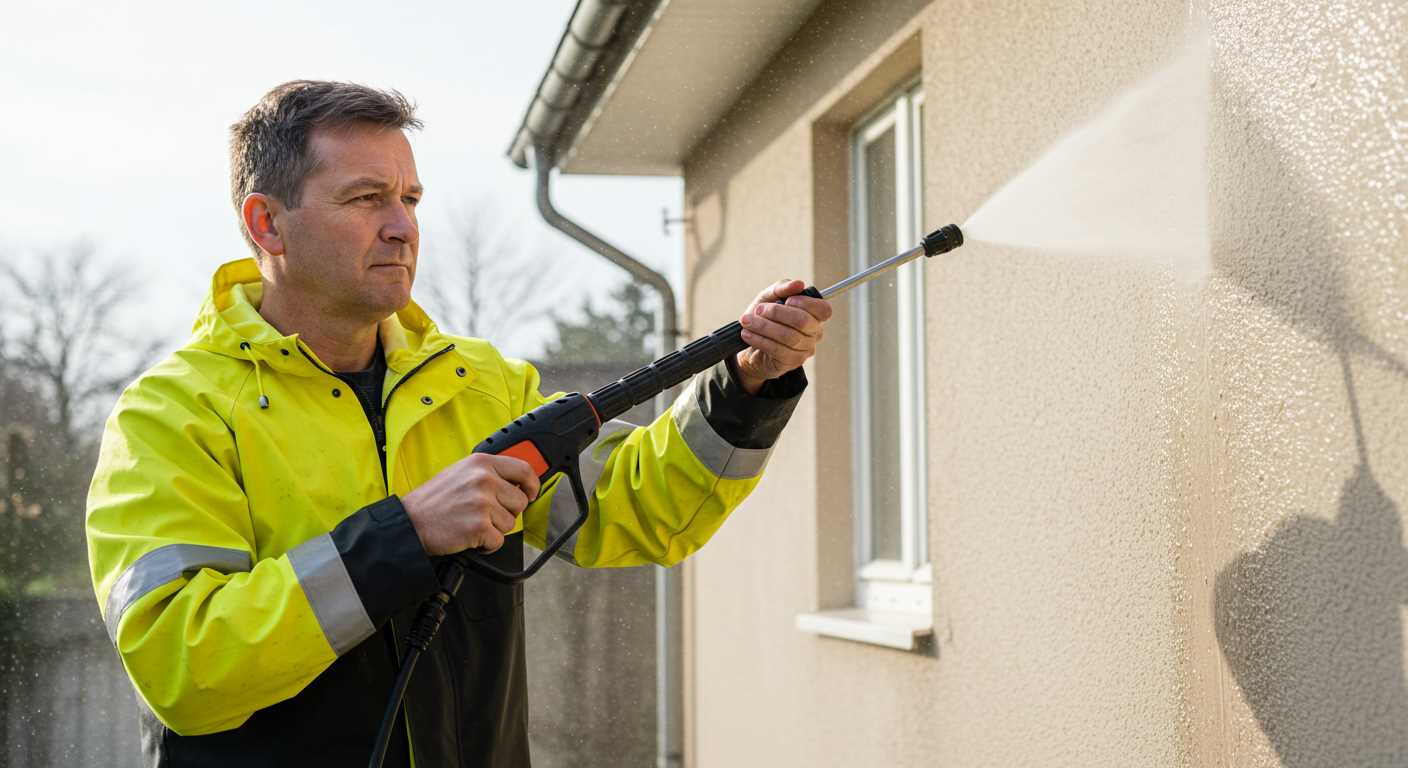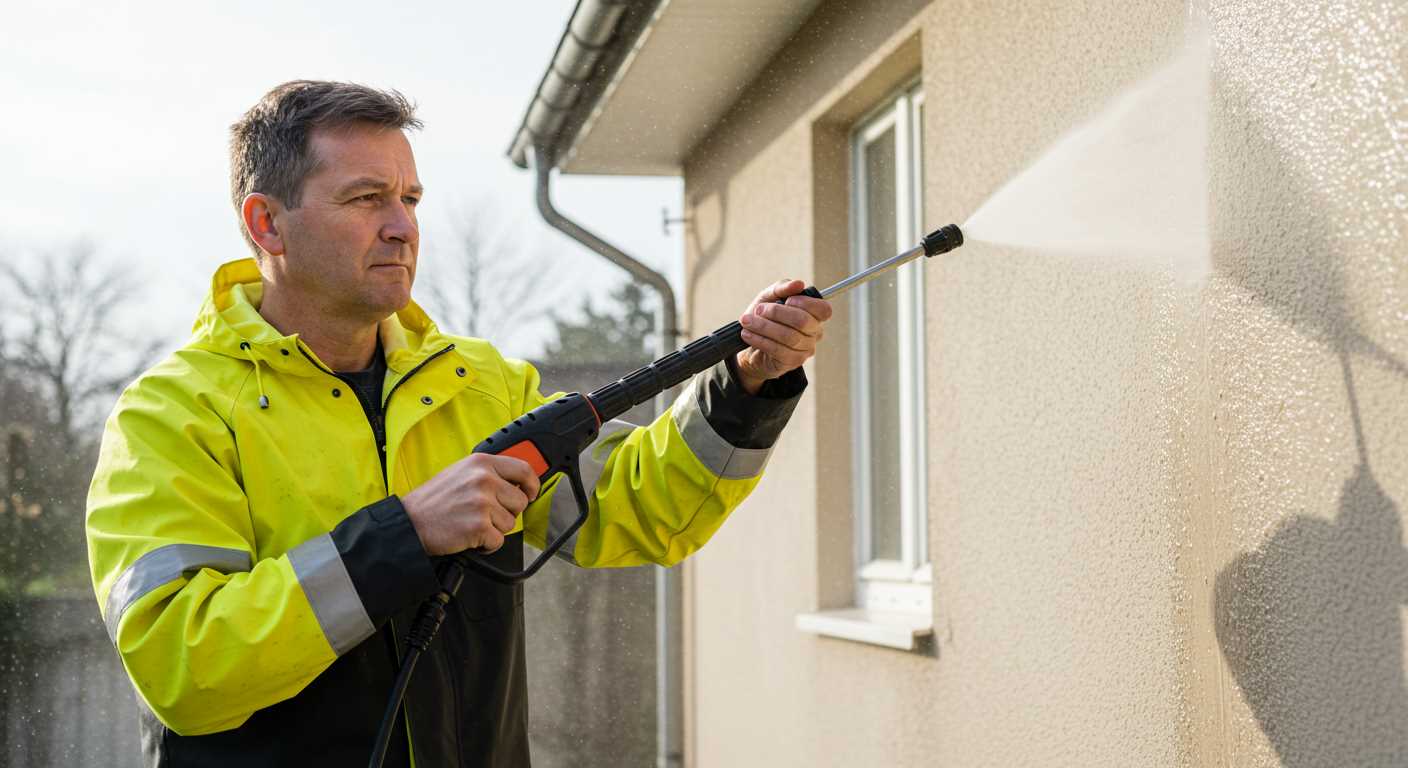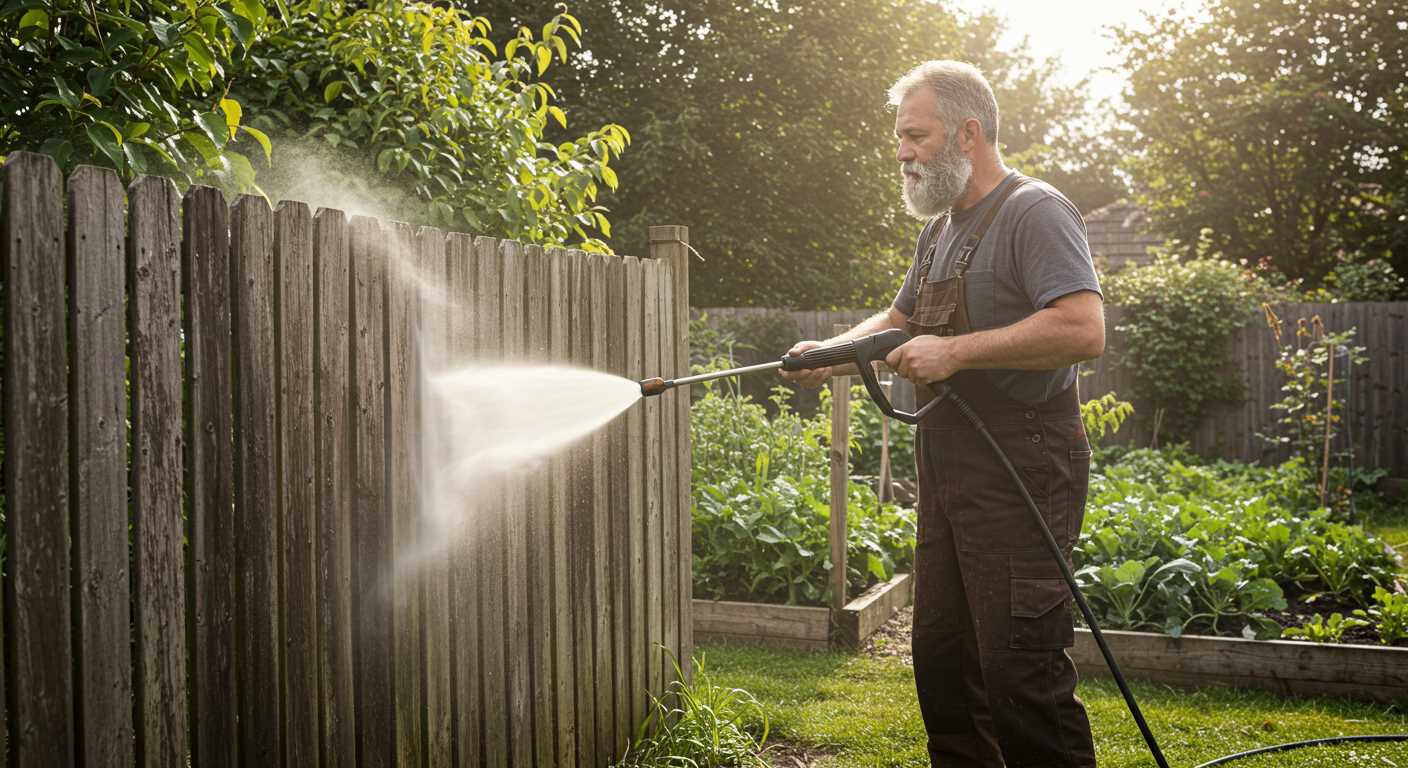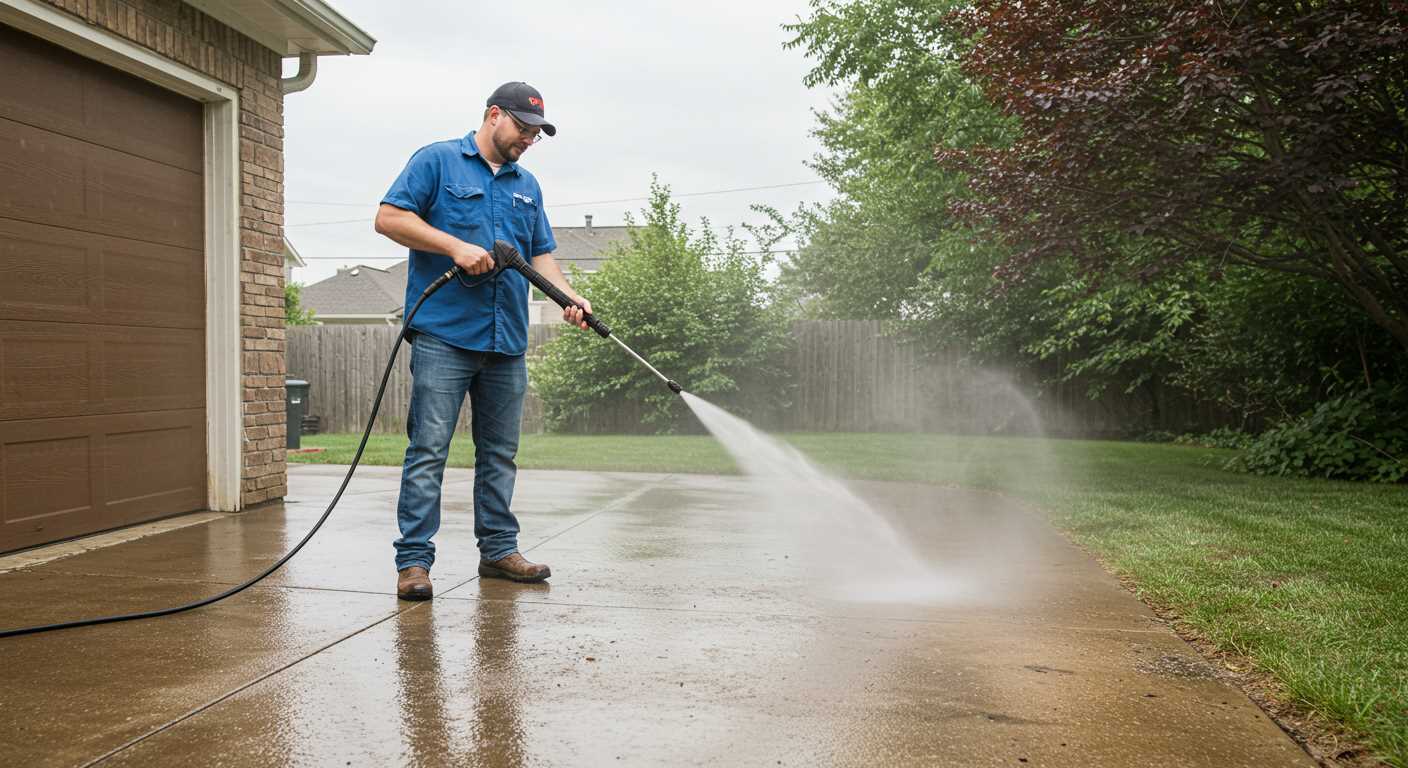




Mix a solution of warm water and a gentle detergent, then apply it with a scrub brush. This combination works wonders for removing dirt and mildew. Use a stiff-bristled brush to tackle stubborn spots. A little elbow grease goes a long way in restoring the surface’s appearance.
For those areas that require more attention, a mixture of vinegar and water can be beneficial. This natural solution not only disinfects but also helps to break down tough stains. Apply it directly to the affected areas and let it sit for a few minutes before scrubbing.
After scrubbing, rinse thoroughly with a hose. Ensure all soap residue is washed away to prevent any slippery surfaces. If the wood appears dull, consider applying a wood conditioner or sealant to enhance its longevity and maintain its beauty.
Regular maintenance, such as sweeping away leaves and debris, will prevent grime buildup. Implementing these techniques can keep outdoor spaces looking inviting and well cared for, all while avoiding heavy machinery.
Choosing the Right Cleaning Solution for Your Deck
For optimal results, selecting an appropriate cleaning agent is paramount. Various options exist, tailored to different materials and levels of grime.
- Oxygen Bleach: Ideal for wood surfaces, it effectively removes mildew and stains without causing damage. Mix according to the manufacturer’s instructions and apply generously.
- Vinegar Solution: A natural alternative, combining equal parts of vinegar and water creates a potent cleaner. It’s particularly useful for light stains and general maintenance.
- Commercial Deck Cleaners: Designed specifically for outdoor surfaces, these products often contain concentrated formulas that tackle tough stains. Always follow the guidelines for dilution and application.
- Dish Soap and Water: For a simple, gentle approach, a mix of dish soap and warm water can be surprisingly effective. This is great for routine cleaning and maintenance.
Testing the solution on a small, inconspicuous section is wise to ensure compatibility with the material. After application, scrub with a stiff-bristled brush to lift dirt effectively.
For tasks requiring more pressure, the garden hose diameter for pressure washer plays a role in achieving adequate water flow, enhancing the overall cleaning process.
Always rinse thoroughly after using any cleaner to prevent residue that could attract dirt or cause discolouration. This ensures the longevity of the surface and maintains its appearance over time.
Gathering Necessary Tools for Manual Cleaning
Start with a sturdy broom or a stiff-bristled brush. A broom helps remove loose debris, while a brush can tackle dirt and grime stuck in crevices. Look for one with a long handle to avoid unnecessary bending.
Next, consider a bucket for mixing cleaning solutions. Choose a container that holds at least 5 gallons; this size is practical for thorough applications without constant refilling.
For applying the cleaning mixture, a mop with a removable head or a sponge is ideal. A mop allows for broader coverage, while a sponge provides detailed attention to stubborn spots.
Include a pair of gloves to protect hands from harsh chemicals and dirt. Opt for heavy-duty rubber or latex gloves for durability and comfort.
Safety goggles are also important, particularly when using strong cleaning agents. They shield eyes from splashes and debris.
To ensure a thorough job, gather the following:
- Sturdy broom or stiff-bristled brush
- 5-gallon bucket
- Mop with removable head or sponge
- Heavy-duty rubber or latex gloves
- Safety goggles
Finally, a garden hose with a spray nozzle will be crucial for rinsing. A nozzle with adjustable settings allows for gentle spraying and powerful rinsing, depending on the need.
With these tools assembled, the task ahead becomes streamlined and efficient, paving the way for a refreshed outdoor space.
Preparing the Deck Surface Before Cleaning
Begin by removing all furniture and items from the surface. This ensures unobstructed access to every part and prevents any damage to belongings. Stow away planters, grills, and decorative elements, allowing ample space for thorough maintenance.
Next, inspect the area for debris, including leaves, twigs, and dirt. Use a broom or a stiff brush to sweep away loose materials. Pay special attention to corners and along edges where dirt tends to accumulate. A clean surface aids in the effectiveness of the subsequent cleaning process.
Addressing Stains and Mildew
Check for any stains or mildew spots. A mixture of vinegar and water can effectively tackle mild stains; apply it directly to affected areas and let it sit for a few minutes before scrubbing gently with a brush. For tougher stains, consider a baking soda paste. Combine baking soda with water to create a thick paste, apply it to the stain, and scrub after a brief waiting period.
Assessing Structural Integrity
Examine the boards for signs of damage such as splintering or rotting. If any boards appear compromised, it may be wise to replace them before proceeding. This not only enhances safety but also ensures a uniform appearance after the cleaning process. Taking the time to prepare the surface thoroughly will yield better results and prolong the life of the structure.
Step-by-Step Manual Cleaning Process
Begin with a thorough sweep of the surface to remove loose debris such as leaves, dirt, and dust. A broom with stiff bristles is ideal for this task.
Next, mix a cleaning solution tailored to the material of the surface. For wooden surfaces, a combination of water and mild detergent works effectively. For composite materials, a mixture of vinegar and water can be used to tackle tough stains.
Apply the cleaning solution with a garden sprayer or a bucket and sponge. Ensure even coverage, letting the solution sit for 10-15 minutes to break down grime. Avoid allowing the solution to dry completely, as it may become more difficult to remove.
After soaking, use a stiff-bristled brush to scrub the area. Work in sections, applying more solution as needed. Pay attention to corners and crevices where dirt tends to accumulate.
Once scrubbing is complete, rinse the area thoroughly with a hose. Use a nozzle with a gentle spray to avoid damaging the surface. Ensure all soap residue is washed away to prevent any slippery conditions when dry.
Examine the surface after rinsing. If stubborn stains remain, repeat the application and scrubbing process. For particularly tough spots, consider using a commercial cleaner specifically designed for the material.
After achieving the desired cleanliness, allow the surface to dry completely before applying any sealant or furniture. This ensures optimal adherence and longevity of protective coatings.
Dealing with Stains and Tough Marks
Begin by identifying the type of stain present. Common culprits include grease, mildew, and rust, each requiring a tailored approach. For grease spots, sprinkle baking soda on the affected area and let it sit for 15 minutes. Scrub with a stiff brush and rinse thoroughly. This method effectively absorbs the grease and makes removal easier.
For mildew or mould, mix equal parts vinegar and water in a spray bottle. Generously spray the solution on the stained areas, allowing it to sit for about 30 minutes. Scrubbing with a brush will lift the mould, followed by a rinse with clean water to prevent regrowth.
Rust stains can be more challenging. A paste made from baking soda and water can help. Apply it directly to the stain and let it sit for 30 minutes before scrubbing. Alternatively, a commercial rust remover may be employed–just ensure it’s suitable for the surface material.
| Stain Type | Cleaning Solution | Method |
|---|---|---|
| Grease | Baking soda | Apply, scrub, rinse |
| Mildew | Vinegar and water | Spray, wait, scrub, rinse |
| Rust | Baking soda paste or commercial remover | Apply, wait, scrub |
Persistent stains may require repeated applications. Patience is key; sometimes, a second or third treatment is necessary to achieve desired results. Always test any solution on a small, inconspicuous area first to avoid damage. After successful removal of stains, consider applying a protective sealant to the surface to prevent future issues.
Rinsing and Drying the Deck After Cleaning
Thorough rinsing is key after scrubbing a surface. Use a garden hose with a spray nozzle set to a gentle setting, ensuring the entire area is free from any remaining cleaning solution. Start at one end and work towards the other, allowing the water to carry away any residues. This method is more controlled than using high pressure and reduces the risk of damaging wood fibres.
Techniques for Effective Rinsing
For stubborn spots, a bucket filled with clean water can be handy. Dampen a sponge or cloth and wipe down affected areas, ensuring no cleaner remains. This not only helps in removing residues but also prepares the surface for drying. Pay special attention to corners and crevices where debris may accumulate.
Drying Strategies
After rinsing, the drying process is crucial. If possible, allow natural sunlight to aid in drying. However, if the weather is damp, consider using a clean, absorbent towel or mop to remove excess water. Avoid leaving the surface wet for long periods, as this can lead to mould or mildew growth.
Ensure the area is well-ventilated; open windows or set up fans to promote airflow. In cooler, humid conditions, drying might take longer. Plan accordingly, especially if you intend to apply any sealants afterwards. A completely dry surface ensures better adhesion and longevity of protective coatings.
By following these rinsing and drying techniques, the surface will be ready for the next steps in maintenance and protection, ensuring a long-lasting and beautiful finish.
Maintaining Your Deck After the Cleaning Process
Regular upkeep is key to prolonging the life of your outdoor space. After thorough scrubbing, ensure to apply a protective sealant to guard against moisture and UV damage. A quality sealant can enhance the natural beauty of the wood while providing a barrier against the elements.
Inspect for any loose boards or protruding nails. Addressing these issues promptly can prevent further damage and enhance safety. Tighten screws and replace any damaged planks as necessary. It’s a straightforward task that can save you from more extensive repairs later on.
Consider establishing a routine cleaning schedule. Seasonal maintenance, such as sweeping away leaves and debris, can prevent mould and mildew growth. If you notice stains, tackle them immediately with a suitable cleaning solution. For organic stains, a mixture of vinegar and water can work wonders; you might recall a handy tip on how to clean a fish tank with vinegar for reference.
Lastly, keep an eye on the condition of your protective finish. Reapplication every couple of years can keep your surface looking fresh and resilient. This simple step will make future maintenance easier and your outdoor space more inviting.
FAQ:
What are the basic steps for cleaning a deck without a pressure washer?
To clean a deck without a pressure washer, you can follow these steps: First, remove all furniture and items from the deck. Next, sweep the surface to eliminate loose dirt and debris. Prepare a cleaning solution by mixing water with a deck cleaner or a mixture of vinegar and water. Apply the solution to the deck using a mop or a brush, working in small sections. Scrub the surface with a stiff-bristled brush to remove stains and grime. Finally, rinse the deck thoroughly with a hose to wash away any remaining cleaner and dirt.
Are there any natural cleaning solutions I can use for my deck?
Yes, there are several natural cleaning solutions you can use. A popular option is a mixture of vinegar and water, typically in a 1:1 ratio. Another effective solution is baking soda mixed with water to form a paste, which can be applied to stubborn stains. You can also use lemon juice for its natural bleaching properties. These solutions are environmentally friendly and can help maintain the appearance of your deck without harsh chemicals.
How often should I clean my deck to maintain its condition?
The frequency of cleaning your deck depends on various factors such as its exposure to the elements and the type of wood. Generally, it’s advisable to clean your deck at least once a year, preferably in spring or autumn. If your deck is in a shaded area or receives a lot of foot traffic, you may need to clean it more frequently, around every six months, to prevent the buildup of dirt, mould, and mildew.
What tools do I need for cleaning a deck without a pressure washer?
For cleaning a deck without a pressure washer, you will need a few basic tools. A stiff-bristled brush is essential for scrubbing the surface and removing dirt and stains. A broom or a leaf blower can help you clear away debris before cleaning. You’ll also need a bucket for mixing your cleaning solution and a mop or sponge for applying it to the deck. Lastly, a garden hose will be necessary for rinsing the deck after cleaning.
Can I use bleach to clean my deck, and are there any precautions I should take?
While bleach can be effective in removing mould and mildew, it can also damage the wood and surrounding plants, so it should be used with caution. If you choose to use bleach, dilute it with water (usually one part bleach to three parts water) and apply it carefully. Always test a small, inconspicuous area first. To protect your plants, cover them with plastic sheeting, and ensure you wear gloves and eye protection when handling bleach to avoid skin irritation and eye damage.
What are the best methods to clean a deck without using a pressure washer?
There are several effective methods for cleaning a deck without a pressure washer. One popular approach is to use a mixture of warm water and a mild detergent. Apply the solution with a stiff-bristled brush, scrubbing the deck’s surface to remove dirt and stains. Another method involves using a mixture of vinegar and water, which can help to eliminate mould and mildew. For tougher stains, you might consider a baking soda paste, which can be applied directly to the stain and scrubbed off after some time. Rinsing the deck thoroughly with a hose after cleaning is crucial to remove any residue from the cleaning solutions.
How often should I clean my deck without a pressure washer?
The frequency of cleaning your deck can vary based on several factors, including the type of material, the climate, and how much use it gets. Generally, a good rule of thumb is to clean your deck at least once a year. However, if your deck is exposed to heavy foot traffic, pets, or is situated in a particularly damp or dusty environment, you may want to clean it more frequently, possibly every six months. Regular maintenance not only keeps the deck looking good but also helps to prevent long-term damage from dirt, mildew, and other contaminants.





.jpg)


